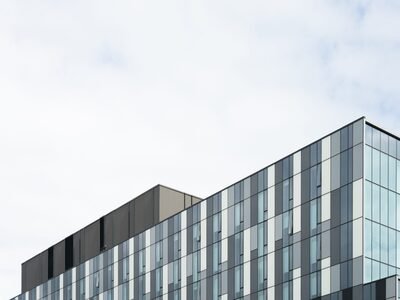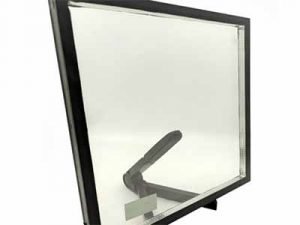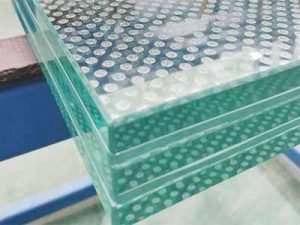Definition
Silk screen glass also called silk printing glass, ceramic frit glass, or ceramic printing glass. It is processed inorganic glaze (also known as ink), printed on the surface of the glass, and then toughened or heat-strengthened after drying, the glaze is permanently sintered on the surface of the glass and get decorative glass products.
The glaze used in silk screen glass is generally inorganic color and low melting point glass, in the process of tempering and sintering, the glaze is fused to the surface of the glass, so it has a stable color, not easy to fade, the glaze layer is strong and not easy to fall off, and can be achieved with the building life.
Compound Product
Ceramic print glass can also be coated, laminated, insulated, and other composite processing. So as to obtain special properties for other purposes. Therefore, it is widely used in the architectural decoration industry; home furnishing, electronics field, etc. also often use color glaze process.
High-temperature glaze, low-temperature glaze, silkscreen
Silk screen glass generally refers to high-temperature glazed glass, and the glaze needs to be sintered on the glass surface at a temperature of 600-700℃ after printing. And low-temperature glaze, also known as low-temperature ink, is the low-temperature ink printed on the surface of the glass for drying after the product, drying temperature is generally not more than 200 ℃.
Low-temperature glaze because it does not need to go through high temperature, its pigments can use some organic pigments, so the color is richer and more selective. However, low-temperature glaze and glass adhesion than high-temperature glaze is poor, mostly with nails that can be buckled off, while the color durability is not allowed to high-temperature glaze. Generally used more in home appliances, electronic glass.
Silk-screen printing is the means of glaze printing to the glass, high-temperature glaze and low-temperature glaze can be used silk-screen printing process. Screen printing is generally relative to roller printing, roller printing is generally only full-page printing or regular patterns.
Oil type: oil-based glaze, water-based glaze, lead-free glaze
The glaze used in the past colored glaze glass is oil-based glaze, that is, the pigment needs to be printed with oil-based solvents and alkyd resin blending. Therefore, there are VOC (Volatile Organic Compounds) produced in the production of color-glazed glass, which has a certain impact on the operators and the environment.
In recent years, water-based glazes have started to emerge, and water-based glazes replace oil-based solvents and alkyd resins with water, making the production process of color-glazed glass more healthy and environmentally friendly. However, since the diffusivity and bonding of water as a solvent is significantly worse than oil, the production process is, therefore, more demanding.
The emergence of lead-free glaze is also the requirement of health and environmental protection, in the early year’s many glazes in order to reduce the melting point of glaze, improve color saturation often add lead glass or other lead-containing materials in the glaze. In recent years, as the concept of environmental protection rose into the hearts of many glaze manufacturers have launched a lead-free glaze, performance is basically close to the lead glaze.
colored glaze pattern and visual illusion
Architectural glazed glass is generally used in regular geometric patterns such as dots and lines. These patterns are well designed so that the building and space can show a simple and generous style.
Please call or email us with any questions or inquires.



